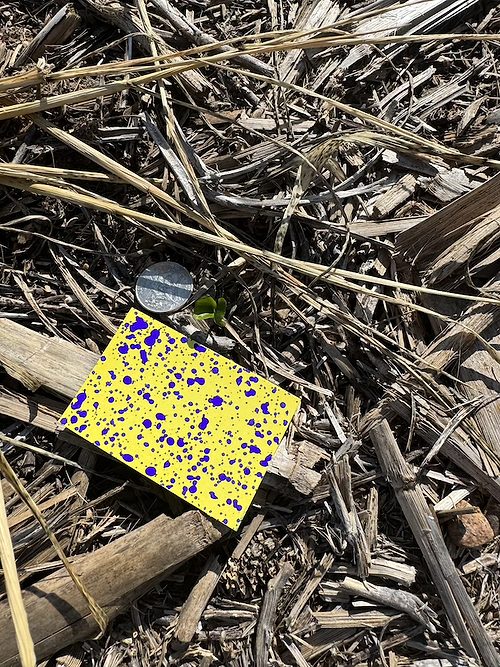Eagle, Wis., farmer Tyler Troiola’s first experience with the John Deere See & Spray Premium retrofit kit is in the books, and overall, the system made a good first impression.
“I’m happy with what I’ve seen so far,” Troiola says. “The herbicide savings were as advertised on corn. Soybeans were a little trickier, though.”
Opening Statement. It took about half a day for Troiola’s local dealer, Sloan Implement, to calibrate the 36-camera system on his John Deere R4038 sprayer. Once it was ready to go, Troiola wanted to make sure the system was accurate before unleashing it on his entire farm.
“We went into a field and marked a bunch of weeds with yellow, water-sensitive paper,” Troiola says. “We put some water in the sprayer and tested it out to see if the droplets were hitting the mark, and it turned out they were. It hit everything that was out there.”
The shorter the corn, the greater the savings, Troiola quickly discovered. He sprayed his no-till corn with a tank mix of Roundup and BASF Status herbicides and Jackhammer and Crosshair adjuvants when the corn was around V4-V5 at 10 inches tall, 14 inches tall and 18 inches tall.
“The system only sprayed about 13-18% of the field on 10-inch-tall corn, which resulted in over 80% in herbicide savings,” Troiola says. “On 14-inch-tall corn, it sprayed about 25% of the field, dropping the savings to 75%, and at 18 inches, it sprayed about 35%, which still saved us 65% on herbicides.”
Jury’s Out. Troiola’s no-till soybeans, drilled in at 30-inch, 15-inch and 7½-inch spacings, presented more of a challenge for the cameras.
“See & Spray worked best on 30-inch beans, but it still sprayed about 60-70% of the field on average and up to 85% on some fields,” Troiola says. “That’s only 15% herbicide savings. When you’re paying a $4 per acre subscription fee, are you really saving anything?”
The answer to that question might ultimately be yes, Troiola says, considering his tank mix for soybeans, which includes Roundup, Liberty, Enlist and adjuvants, is more expensive than the corn program. Plus, time savings were priceless, he says, as not having to stop and reload the tank as often makes a huge difference when planting and spraying windows are smaller in a wet summer.
Troiola theorizes the cameras had trouble distinguishing between weeds and soybeans planted in heavy residue consisting of corn stalks and terminated cereal rye. When in doubt, the system sprayed.
“You can change the setting to if the camera doesn’t know what to do, it doesn’t spray,” Troiola says, “but we had it set for if the camera fails to distinguish between cash crops and weeds, then it just sprays. The heavier the residue or the bigger the crop, it seemed to spray more. The system errs on the side of caution and over-sprays rather than under-sprays, which we’re OK with.”
Final Verdict. Despite the mixed results, Troiola hasn’t given up on See & Spray with soybeans yet. He’s going to make some adjustments with timing next year to see if he can increase his savings, and John Deere has been more than willing to help.
“They get reports every day of how much herbicide I used with the system,” Troiola says. “After seeing I had a couple fields with only 15-20% savings, they reached out to see what went wrong and what they can do better. They’re trying to improve just like I am.”
Troiola knew there would be a significant learning curve with the new technology. But he’s already answered his two biggest questions — will it work in heavy residue, and is it practical for a no-till system?
“As long as the cereal rye was dead, the system seemed to work because I think it distinguishes color as well,” Troiola says. “I was skeptical that it would work in heavy residue, but I don’t think we missed any weeds after doing some scouting. It got everything that was out there.
“I don’t have all the answers yet,” he adds. “Every no-till system is different, and technology like this isn’t one-size-fits-all. But neither are cover crops. I invested in this technology because I think it might work. It’s going to take a lot of management and number crunching to make sure it does work. I think it will only improve as time goes on, and I’m excited about it.”







